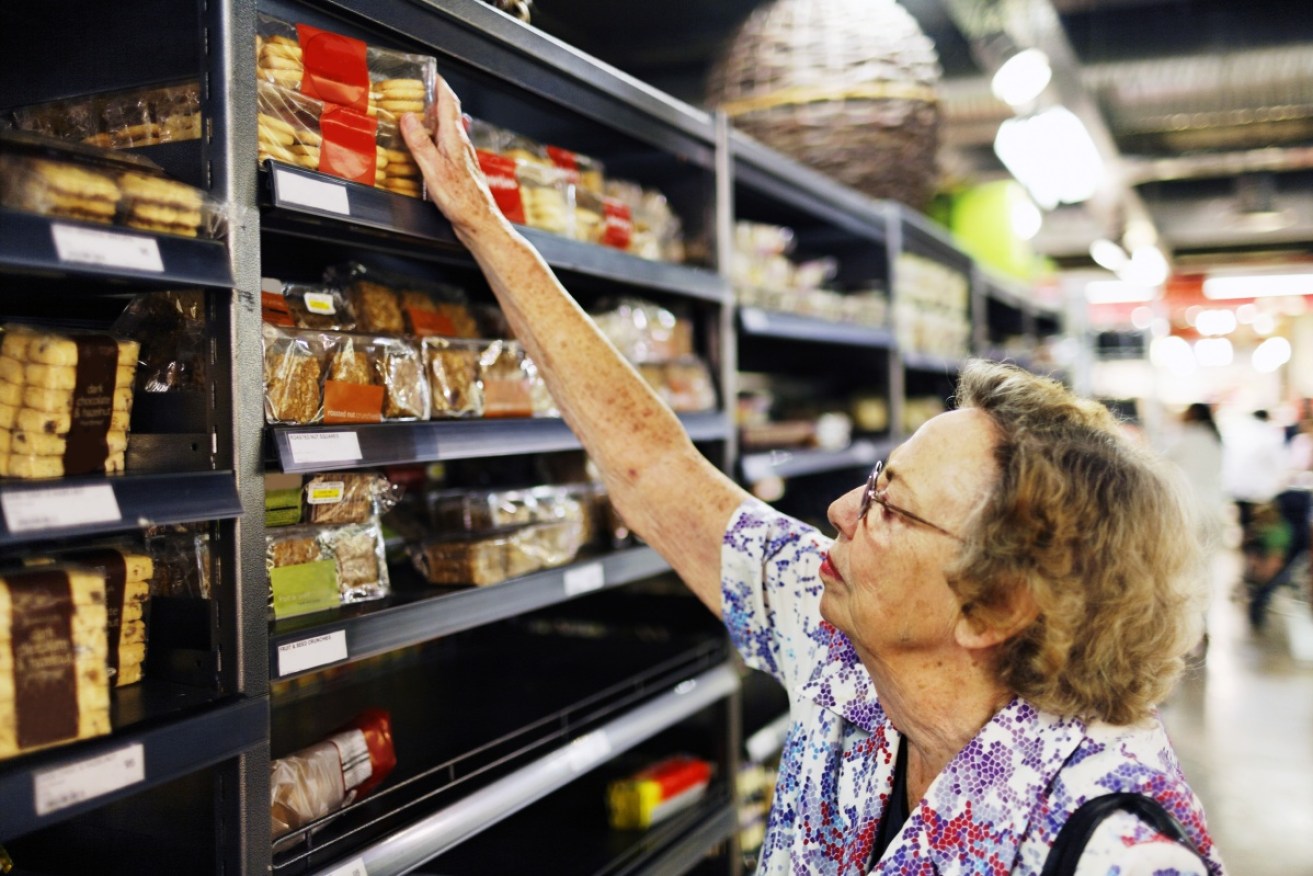Supermarkets hide their Easter eggs for the sake of customers’ waistlines


Is that a healthier biscuit or just the one she likes? Photo: Getty
How can we turn a nation’s unhealthy diet around?
As it goes for Australians, people in the UK eat way too many foods high in sugars, salt and saturated fats.
Despite high-profile attempts to encourage Brits to swap hot chips for salads (think of celebrities such as Jamie Oliver trying his heart out) the preference for the sorts of foods that give you type 2 diabetes and heart attacks remains intact.
The UK government is hoping that new legislation which restricts the promotion of these foods in prominent locations in supermarkets might help wean its citizens off chips and sweets and turn them on to eating more fruit and vegetables.
In other words, the UK is hoping that changing the layout and signage in supermarkets will impact the buying habits of the public.
Will these laws work?
The short version: Up to a point.
Oxford scientists tested the government’s plan by trialling a number of interventions in grocery stories with mixed results.
One study tested how the availability, positioning, promotions, and signage of healthier food options might influence purchasing behaviour within major UK supermarkets.
For example, stocking low-fat chips next to regular chips was associated with a 23 per cent drop in sales of the fattier version.
Increasing availability of “lower energy” (fewer calories) biscuits led to an 18 per cent lift in their sales. The sales of regular biscuits, with higher calories, dropped by four per cent.
This suggests that stocking shelves with more healthy versions of a food leads to more consumers taking up these healthier options. But that wasn’t always the case.
Hiding Easter eggs was sort of successful
In a second study, carried out in the seven weeks leading up to Easter, supermarkets effectively hid Easter eggs and other “seasonal candy” in the regular confectionery aisles instead of promoting them prominently.
The results of this trial were promising.
In this study, 34 ‘intervention stores’ in two London boroughs, removed their free-standing promotional displays of Easter treats. Easter egg sales were compared with those at 151 control stores, where the promotional displays stood prominently at the end of aisles and near checkouts.
It was expected that both intervention and control stores would see an increase in sale of Easter eggs.
In the control stores, sales increased by 18 per cent. In the intervention stores, there was only a five per cent increase.
The authors reported: “The absolute difference in confectionery sales between control and intervention stores was approximately 21 kilograms per store per week.”
This amounts to nearly 5000kg of chocolate and lollies left on the shelf over the seven-week period.
The researchers are encouraged
Dr Carmen Piernas, a researcher with Oxford’s Nuffield Department of Primary Care Health Sciences, was the study’s lead author.
She and her colleagues believe the new papers – see here and here – offer new evidence on how legislation can help shape consumers’ diets with the goal of improving health.
Dr Piernas said: “These results from a ‘real world’ intervention provide promising evidence that the proposed legislation in England to restrict promotions of less healthy items in prominent locations may help reduce over-consumption.”
In some cases, maybe
One of the big challenges is getting people to eat more fruit and vegetables, and more fibre in packaged foods such as cereals. The studies were less successful in this regard.
Consider these results:
- There was no evidence that a positioning intervention – placing higher-fibre breakfast cereals at eye level – was associated with increased sales of healthier cereal or reduced sales of regular sugar-rich cereal
- Dropping the price of healthy foods doesn’t lead to higher sales. The authors write: “A price promotion on seasonal fruits and vegetables showed no evidence of any greater increases in sales of items on promotion in intervention versus control stores.”
- A nationwide promotion using Disney characters was associated with increased sales of sugar-free baked beans – up 54 per cent
- The same promotion led to a steep increase in the sale of “selected fruits” – up 305 per cent. It wasn’t clear if these fruits were canned or fresh
- Shelf labels that highlighted lower-sugar beverages had no effect on sales of lower or higher-sugar drinks. People want their sweet stuff.
The interventions may have a limited shelf life. As the authors note:
“We reported that some choice architecture interventions implemented within stores, such as availability and promotions, were associated with short-term changes in food purchasing behaviours.
“However, the effect of promotions on consumer behaviour may diminish with time and are less likely to be sustainable for retailers over longer time periods.”








